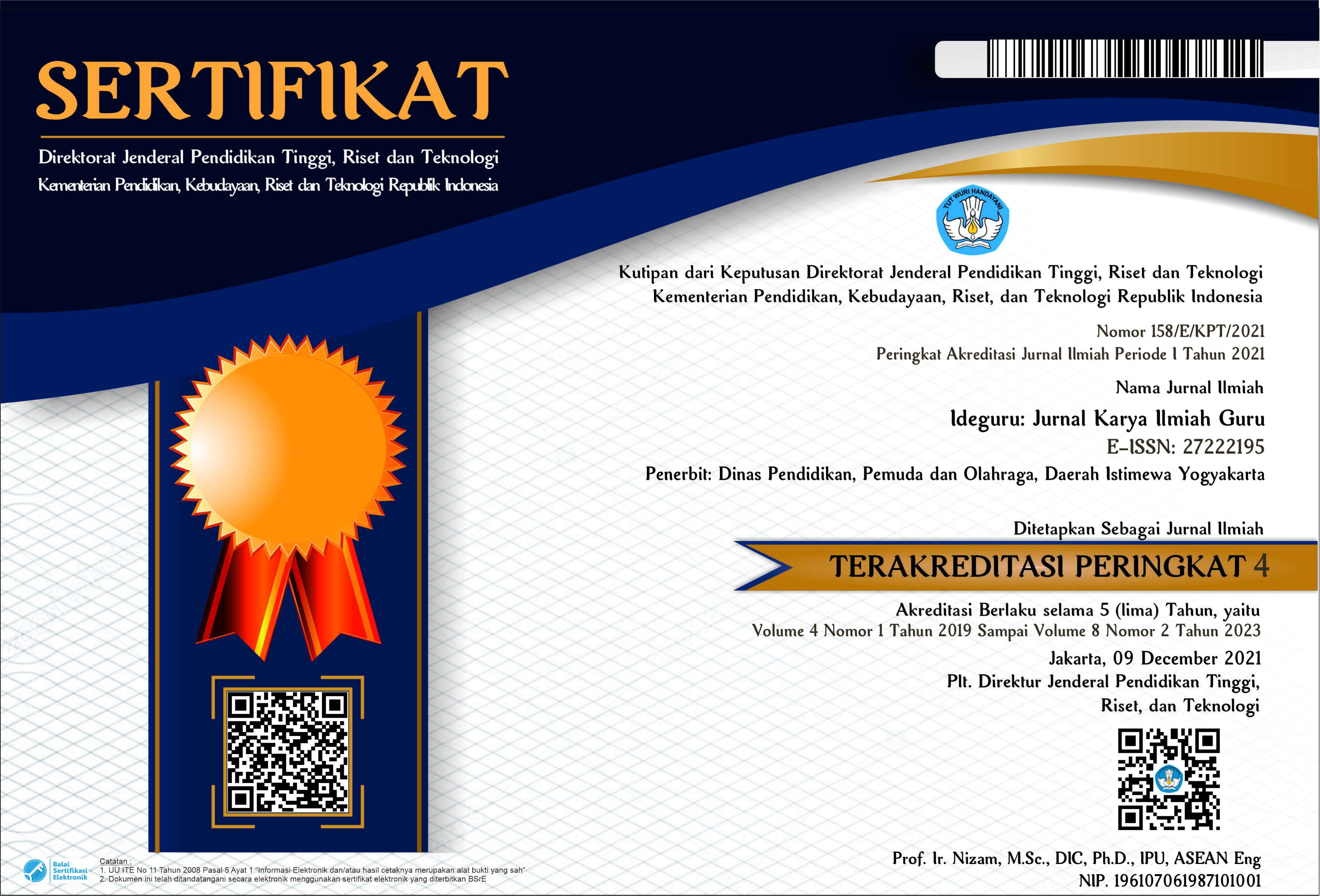COMPARISON OF THE EFFECTIVENESS OF THE STAD LEARNING MODEL WITH SNOWBALL THROWING IN TERMS OF LEARNING MOTIVATION AND LEARNING OUTCOMES
Abstract
This study aims to determine whether there are differences in learning motivation before and after STAD and SN learning models are applied, whether there are differences in chemistry learning outcomes using the STAD learning model with SN if the initial knowledge is statistically controlled. This research is an experimental research. Determination of the sample using purposive random sampling, with class XI MIPA 1 and XI MIPA class 3. The design of this study was the design of two factors (2 learning models), two samples (experimental classes 1 and 2), and one covariable (initial knowledge). The research data in the form of chemistry initial knowledge data, learning motivation, and chemistry learning outcomes of experimental classes 1 and 2. Data were analyzed by t-test and analysis of covariance. T-test results with the experimental class 1 subjects there is no difference in learning motivation before and after STAD learning with Sig. (2-tailed) 0.117> 0.05. For the experimental class 2 there was no difference in learning motivation before and after SN and Sig. (2-tailed) 0.137> 0.05. The results of the different t-test subjects did not differ in the motivation to study chemistry that followed the learning of STAD and SN with Sig. (2-tailed) 0.569> 0.05. Anacova results obtained F = 15,373; Sig. <0.01, meaning that there are differences in chemistry learning outcomes using STAD learning with SN if initial knowledge is statistically controlled. It can be concluded that the STAD learning model is more effective in improving student chemistry learning outcomes in class XI of SMA N 1 Banguntapan in the 2019/2020 academic year compared to SN.
PDF Downloads
Copyright (c) 2020 Bekti Mulatsih

This work is licensed under a Creative Commons Attribution 4.0 International License.

 DOI:
DOI:














